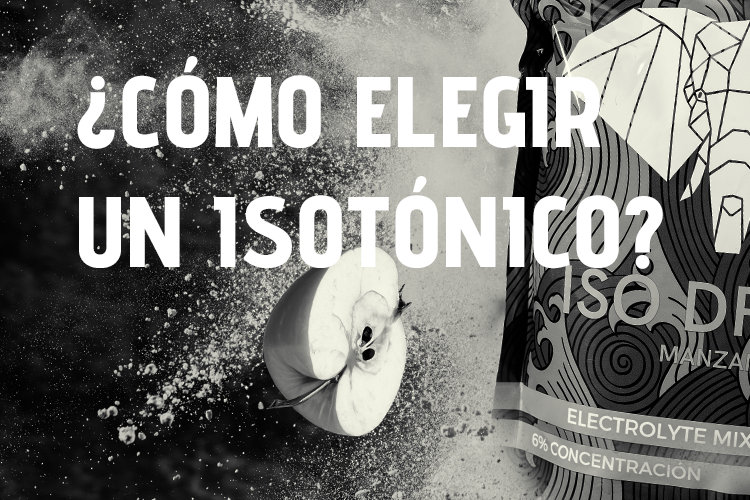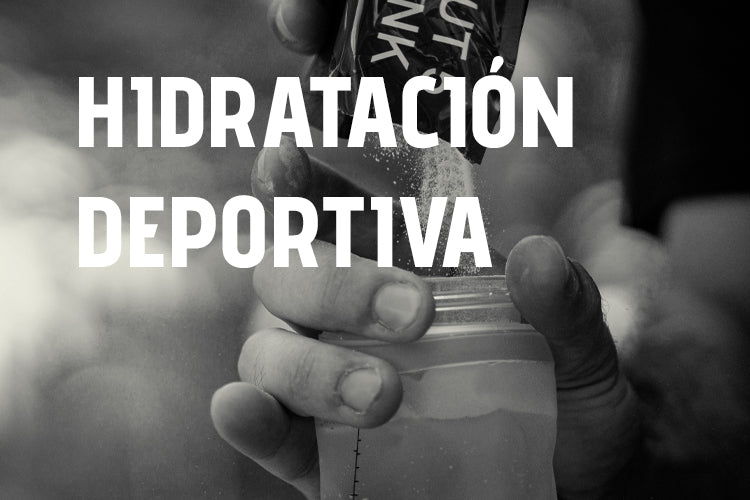Isotonic drinks are very often categorized as any powdered product that is mixed with water.
But reality isn't like that. There are a multitude of products on the market today, with very different quantities and usage patterns that lack scientific evidence.
Before telling you what to look for when choosing one isotonic drink or another, I'll briefly explain the importance of concentration in a drink so you can understand why "not all powdered products are isotonic."
One of the main goals of rehydration solutions (ORS) and sports drinks is to make fluids available for use within the body as quickly as possible. Drinks designed for use as ORS and sports nutrition contain a mixture of carbohydrates and electrolytes, with sodium being the main electrolyte.
Carbohydrates in ORS (carbohydrate drinks) come primarily in the form of glucose, although they may also contain sucrose, maltodextrins, or fructose.
Increasing the amount of carbohydrates in a drink leads to a decrease in fluid transport. (1)
The increase in osmolality due to elevated carbohydrate concentrations leads to a net movement of water into the intestinal lumen, which causes a loss in the body's water reserve and may increase the effects of dehydration (2) .
Previously, it has been shown that electrolyte solutions with 6% CHO lead to greater fluid transport than a 15% glucose solution (3) but there was no difference demonstrated in fluid transport when 6, 8 and 9% glucose and fructose solutions were compared (4).
On the other hand, previous research has suggested that the addition of sodium to ingested beverages will lead to an increase in fluid transport (5) and a reduction in plasma volume change during exercise, indicating greater fluid availability and greater energy supply (6).
Considering the current scientific evidence, it is clear that an isotonic drink should contain
- Concentration between 4 and 6%
- Adaptable usage modes that take into account the packaging used by the athlete
- Sodium intake between 200mg and 400mg to avoid exceeding blood osmolarity and preventing dehydration.
THE PERFECT ISOTONIC
The isotonic according to scientific evidence should contain between
30-45 grams of carbohydrates
250mg and 450mg of sodium
Potassium, magnesium, and calcium in adequate amounts. ( This guide tells you more about this.)
Ratio 1:0.8 (maltodextrin and fructose)
WHY CHOOSE OUR ISOTONIC ISO DRINK?
Our formulation was based on current scientific evidence. This guideline was issued on December 30, 2024, and the carbohydrate, concentration, mineral salt, and osmolarity guidelines support the current formulation in FANTÉ.
The iso drink contains
- Contains 45 grams of carbohydrates per unit
- Provides 300 mg of sodium to optimize your hydration
- Ratio 1:0.8 according to current scientific evidence
- With a carbohydrate concentration of 6% at any dose, increasing gastric emptying
- Adaptable usage mode 250ml / 500ml / 750ml, unique in the market
- It does not contain excess minerals with which you will obtain correct hydration without gastrointestinal problems.
Keep in mind that a hydration drink like an isotonic drink should hydrate you, not dehydrate you. So if you choose a hydration product, make sure it has a concentration between 4% and 6%, and if you want more carbohydrates, choose a carbohydrate drink like GLUT 5 DRINK.
Literature
- Maughan RJ, Leiper J.B (1999). Limitations to fluid replacement during exercise. Can J Appl Physiol 1999, 24:173-187
- Gisolfi CV, Summers RW, Schedl HP, Bleiler TL, Oppliger R. A (1990). Human intestinal water absorption: direct vs. indirect measurements. Am J Physiol, 258:G216-222
- Davis JM, Lamb DR, Burgess WA, Bartoli W.P (1987). Accumulation of deuterium oxide in body fluids after ingestion of D2O-labeled beverages. J Appl Physiol, 63:2060-2066
- A., Bartoli W. P (1990). Fluid availability and sports drinks differing in carbohydrate type and concentration. Am J Clin Nutr 51:1054–1057
- Leiper JB, Maughan R.J (1988). Experimental models for the investigation of water and solute transport in man. Implications for oral rehydration solutions. Drugs, 36 (Suppl 4): 65-79
- Barr SI, Costill DL, Fink W. J (1991). Fluid replacement during prolonged exercise: effects of water, saline, or no fluid. Med Sci Sports Exerc 23




Leave a comment
This site is protected by hCaptcha and the hCaptcha Privacy Policy and Terms of Service apply.